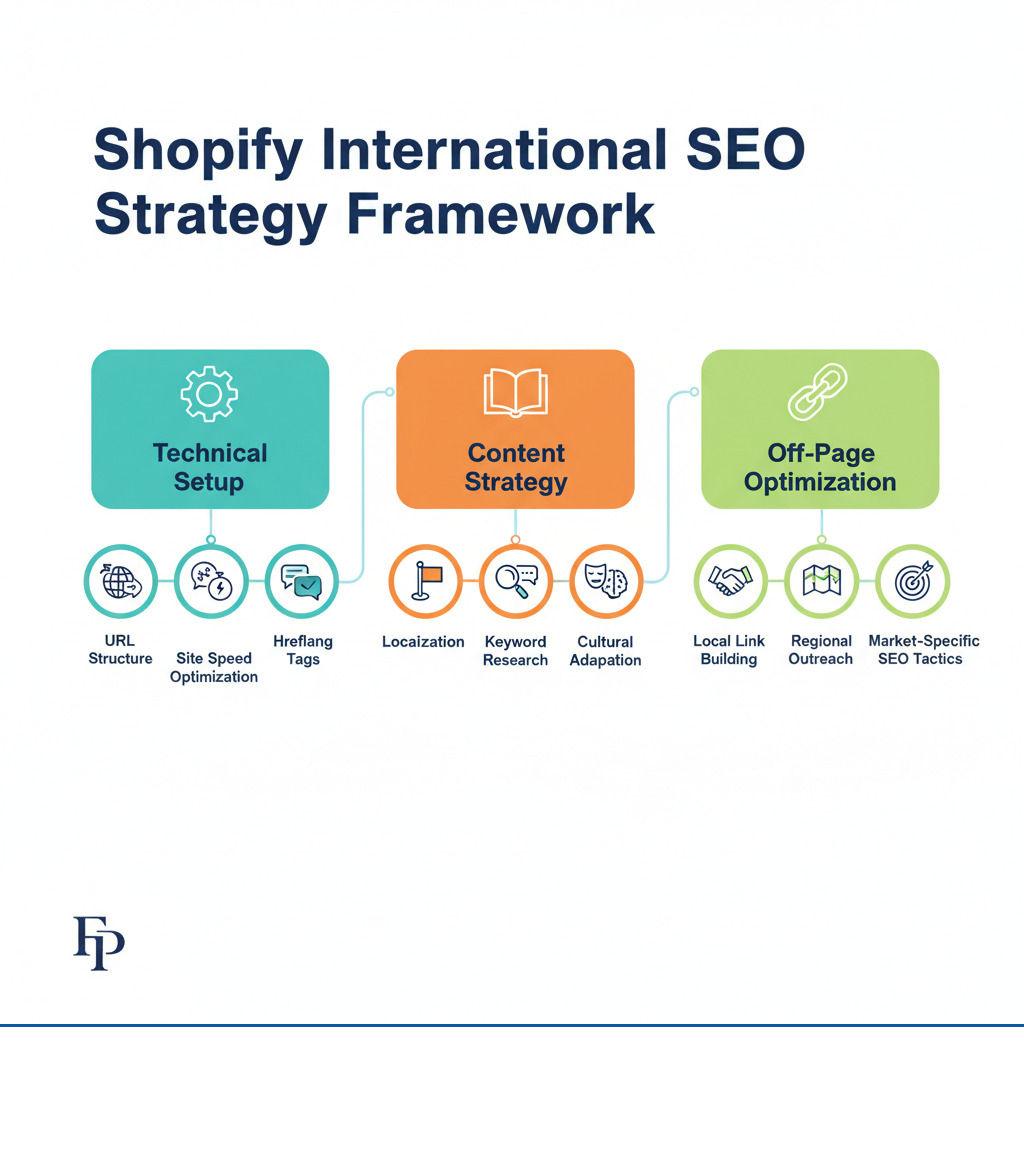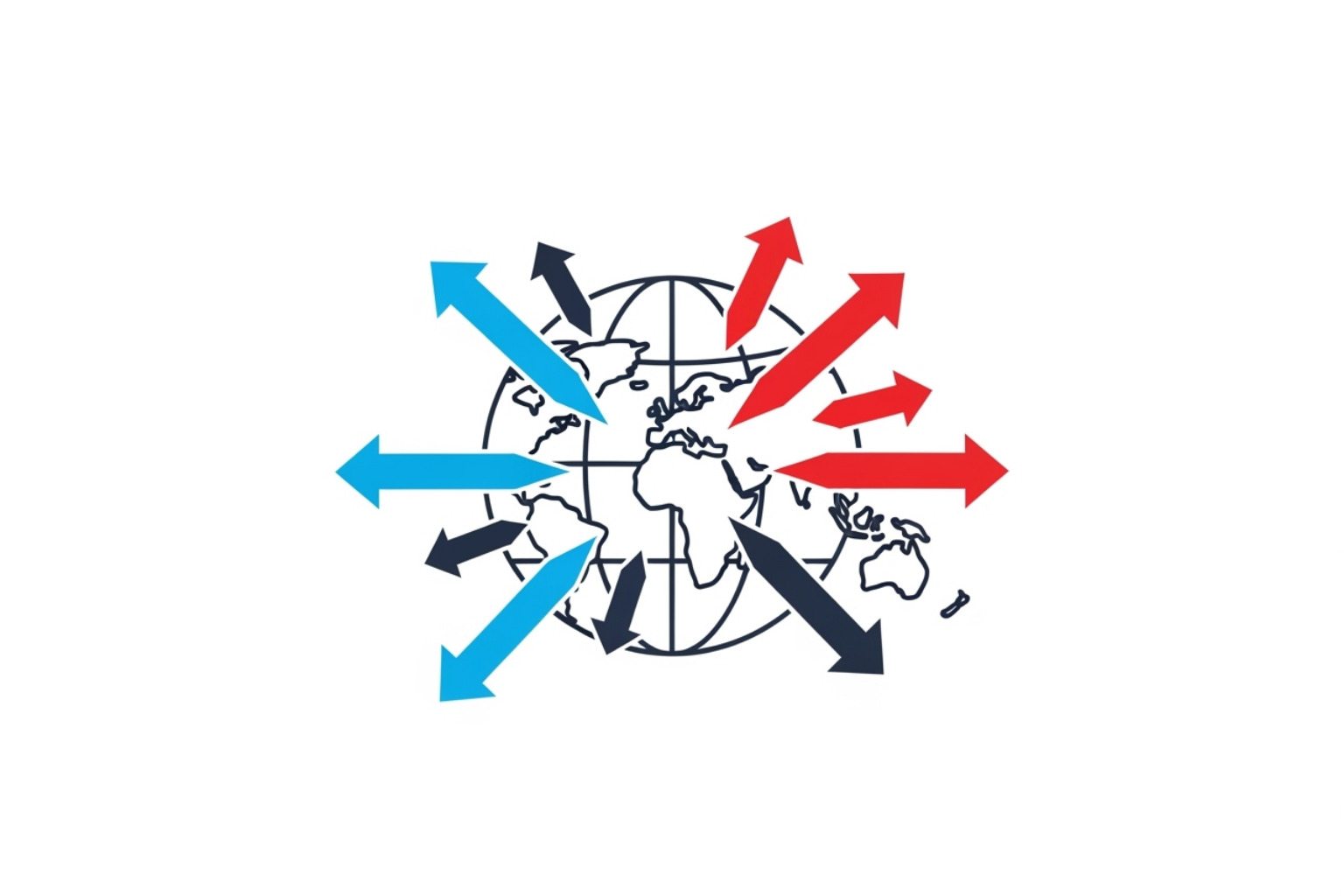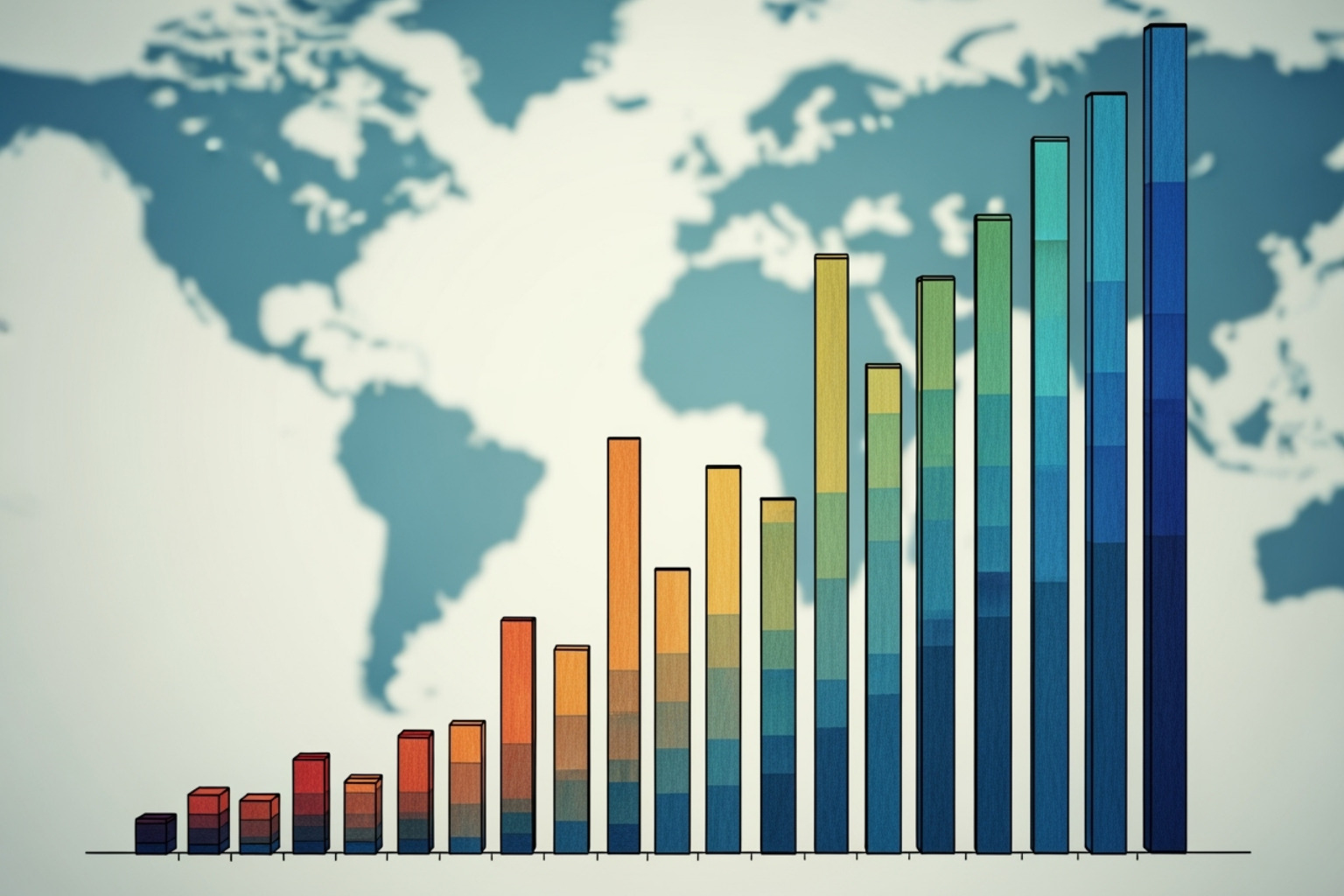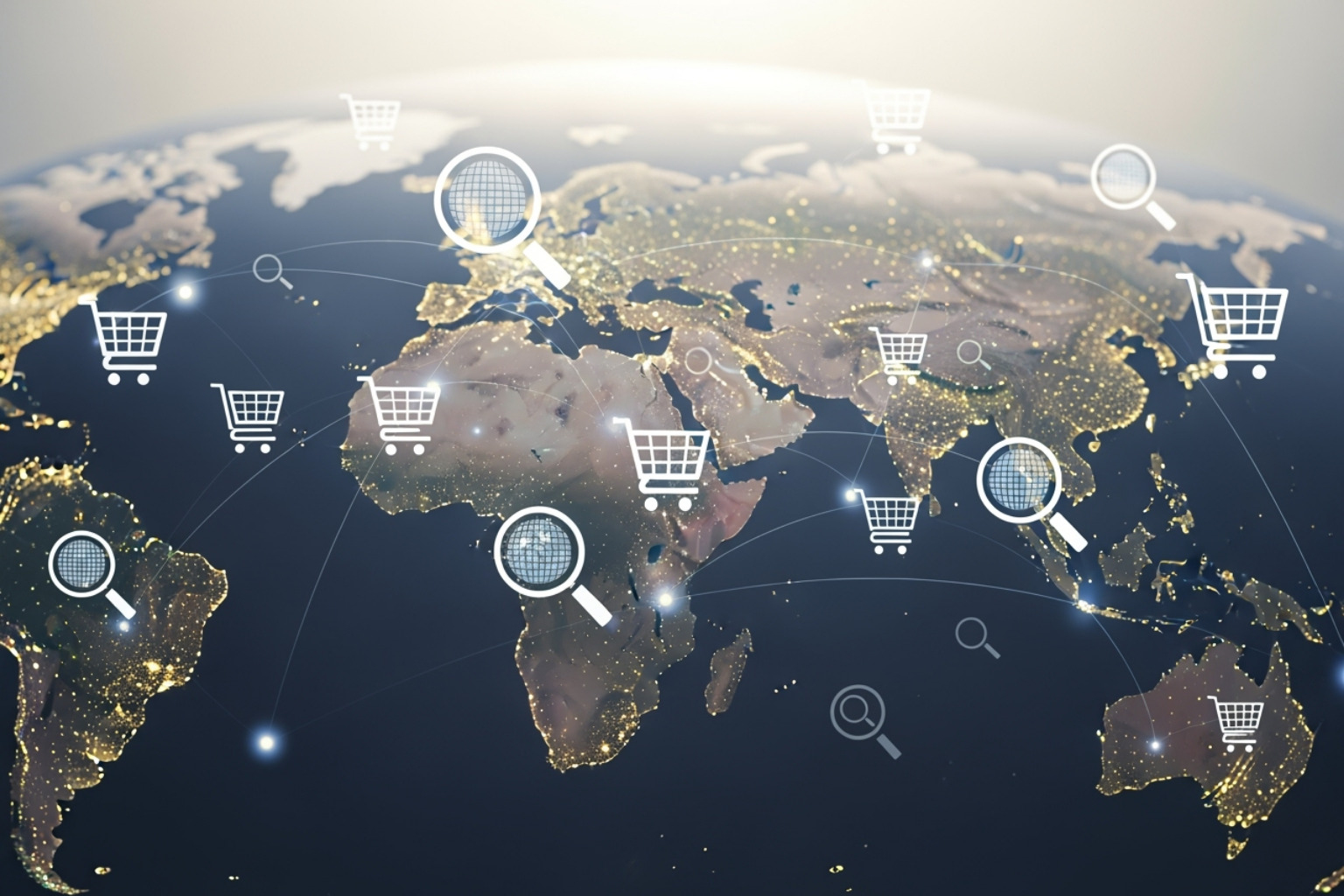Why Shopify International SEO Opens Up Global Growth Opportunities
Shopify international SEO means optimizing your Shopify store to rank in search engines for different countries and languages. This helps you reach global markets and customers. Here's what you need to know:
Key Components of Shopify International SEO:
- URL Structure: Choose between subfolders (/de), subdomains (de.yourstore.com), or country domains (.de).
- Hreflang Tags: Signal to Google which language/country each page targets.
- Content Localization: Translate and adapt content for local markets.
- Technical Setup: Ensure fast loading speeds and mobile optimization globally.
- Local Link Building: Build backlinks from regional websites.
Global ecommerce sales hit $5.8 trillion in 2023 and are expected to reach $8 trillion by 2027. The opportunity for international growth is huge. But success isn't just about shipping overseas. Search engines see each country differently. Without proper international SEO, your store might not show up in local searches or even compete against itself.
Shopify Markets helps by automating technical details like hreflang tags and URL structures. But the real work is in localizing content, researching international keywords, and building a local presence. For example, Americans say "sneakers" while the British say "trainers." This shows why simple translation isn't enough; you need true localization.
I'm Steve Pogson. With over two decades of experience scaling Shopify stores, I've seen how the right Shopify international SEO can change a local business into a global one. At my agency, First Pier, we help brands expand into new markets by blending technical skill with an understanding of local search habits.

Shopify international SEO terms you need:
Is Your Store Ready for Global Expansion?

Going global with your Shopify store can be rewarding, but it's a big step. First, let's clarify what international SEO is and see if your store is ready.
International SEO is about optimizing your site so search engines know who you're targeting in each country. A customer in France should find your French site with local pricing, not your English one.
This matters because search engines treat each country differently. Without it, Google might show your English site to German customers or flag your content as duplicate. Both scenarios cost you sales.
Shopify makes international SEO much easier than other platforms. Shopify Markets automates much of the technical work, like creating hreflang tags and setting up search-friendly URLs. This is a big help compared to other platforms.
But Shopify only provides the tools. You still have to write your German product descriptions and research what keywords French customers use.
Start with your data. Check Google Analytics to see where your visitors are from. If you have traffic from Spain or Canada, that's a sign of opportunity.
Once you find promising countries, research their needs. What are their payment preferences and cultural norms? Many stores fail by assuming all customers shop the same way.
Sometimes you don't need a full international SEO strategy. If you just want to sell in English but accept different currencies, Shopify's simple multicurrency setup may be enough. This lets you show prices in CAD or GBP without creating separate sites.
But if you plan to translate your site, offer different products, or target local keywords, you need a full Shopify international SEO strategy. This includes localized content, local link building, and a solid technical setup for each market.
The difference is like putting up a sign that says "We accept euros" versus hiring local staff who speak the language and understand the culture. One will always perform better.
Choosing Your International URL Structure on Shopify
When going global, your URL structure is a key decision. Getting it right from the start makes everything else easier.
How Shopify Markets simplifies your URL decisions
Shopify Markets simplifies this by defaulting to subfolders (e.g., yourstore.com/fr). This is a smart choice for most stores, as it helps combine your domain authority and keeps management simple.
Shopify Plus offers more flexibility with subdomains or country-specific domains. However, for most stores starting with Shopify international SEO, subfolders are the best balance of simplicity and effectiveness.
Here are your three main options and their SEO impact:

ccTLDs (e.g., yourstore.de)
ccTLDs are like local storefronts. They send the strongest signal to users and search engines that your site is for a specific country. The brand DUER does this well, using shopduer.com for its main site and duer.ca for Canadian customers.
The downside is that you're starting from scratch with each new domain. Your main site's SEO authority doesn't transfer. This option is the most expensive and requires the most effort, as you'll have to manage multiple domains.
Subdomains (e.g., de.yourstore.com)
Subdomains are a middle ground. They provide a country signal while remaining part of your main brand. Google sees subdomains as somewhat separate, so they don't fully share your main domain's SEO strength. It's easier to manage than ccTLDs but still requires building some authority for each.
Subfolders (e.g., yourstore.com/de)
Subfolders are the best starting point for most Shopify stores. They keep all your SEO authority combined under one domain, benefiting your international pages. This is why it's the default for Shopify Markets.
Subfolders are simple. Everything is managed in one place, with no need to handle multiple domains or complex DNS settings. For best results, use the language-country format, like yourstore.com/en-ca for Canadian English. This gives search engines precise targeting information.
Making the right choice for your store
For most stores, subfolders are the best choice. They let you use your existing domain authority with minimal technical hassle. Only consider ccTLDs if you have the resources for distinct market experiences. Subdomains are a good option if you need separation without the complexity of multiple domains.
You can change your strategy later. Starting with subfolders via Shopify Markets provides a solid foundation for future growth.
The Core of Shopify International SEO: Content and Technical Signals
With URL structures covered, let's look at the core of Shopify international SEO: content and technical signals. Shopify automates much of the tech side, but your success depends on creating localized content.
International SEO has two pillars: customer-facing content and technical signals for search engines. Shopify provides the technical base, but you need to add content that connects with local customers. This complete approach is key.
Content Localization: More Than Just Translation
The biggest mistake merchants make is relying on tools like Google Translate. It's not enough for international success. Localization adapts your message to the culture, preferences, and shopping habits of your target market.
For example, "cotton candy" in the US is "candy floss" in the UK. Using the wrong term means customers won't find your products. Cultural details matter, which is why human translators are essential for customer-facing content. AI tools often miss the cultural context that shapes a first impression.
Offering local currencies and payment methods is crucial. Shopify Markets handles multiple currencies, but you should also offer popular local payment options like iDEAL in the Netherlands to boost conversions.
Localize your meta titles and descriptions. They are the first thing customers see in search results and need to be keyword-rich and culturally relevant to earn clicks. This all improves the user experience. A site that feels local builds trust and is a key part of good ecommerce UX design.
Hreflang Tags and Canonicalization in Shopify
On the technical side, code tells search engines which page version to show to which users. Shopify's automation is a huge help here.
Hreflang tags are code in your site's header that clarifies the relationship between page versions for different languages or regions. Shopify Markets automatically creates and manages these tags for you, removing a major technical hurdle.
The x-default tag tells search engines which page to show visitors from untargeted regions, acting as a global default. Canonical tags work with hreflang to prevent duplicate content issues by signaling that similar pages are intentional variations for different audiences.
Always check for hreflang errors in Google Search Console after setup. Simple mistakes can derail your strategy.
Other Key Technical Considerations for Shopify International SEO
Global site speed is critical. A slow site hurts conversions. Shopify's Content Delivery Network (CDN) helps by serving content from servers close to your customers, speeding up load times worldwide. Since Google considers page speed a ranking factor, this directly impacts your visibility.
Mobile-first indexing is also key, as Google ranks sites based on their mobile version. With 60% of global internet traffic on mobile, this is vital. Responsive Shopify themes ensure a good experience on any device.
International schema markup helps search engines understand your content, leading to rich snippets. For global stores, include local currency, ratings, and availability in your product schema to improve click-through rates.
Marketing and Performance Tracking for Global Stores

With a solid technical setup and localized content, it's time to market your global store and track its performance. Your Shopify international SEO success hinges on understanding what international customers search for and how to reach them. This requires creating new strategies for each market, not just translating existing ones.
International Keyword Research and Local Link Building
A common mistake is assuming keyword strategies can be directly translated. They can't. Local search behavior is more than just translation. For example, Americans search for "sneakers," while people in the UK search for "trainers." Location-based keyword research is critical.
Start with Google Trends to see what's popular in your target markets. Tools like SEMrush or Ahrefs provide country-specific keyword analysis to check search volumes and competition.
A local backlink profile is key for international SEO. Local backlinks drive relevant traffic and signal to search engines that your site is trustworthy in that region. Reach out to regional bloggers and press with personalized pitches that offer real value. Also, encourage reviews from regional customers, as these create natural backlinks and build social proof. This is part of a targeted SEO strategy that treats each market individually.
Tracking SEO Performance Across Different Markets
You can't improve what you don't measure. Tracking international SEO requires segmenting data by region to see what's working where.
Use Google Search Console to track performance. Filter by page to compare subfolders like /fr and /de. Monitor clicks, impressions, click-through rates, and average position for each market.
In Google Analytics (GA4), create country-specific segments to track organic traffic and on-site behavior. The most important metric is conversion rate by market. Also, track indexed pages to ensure search engines are finding all your international content.
Optimizing for Search Engines Beyond Google
Google isn't the only search engine. Ignoring others means missing opportunities in key markets. For example, Baidu dominates in China, Yandex in Russia, and Naver in South Korea. Each has unique algorithms and ranking factors. If you're targeting these markets, you need specific SEO strategies for each platform.
Shopify international SEO requires understanding each market's unique search behaviors and culture. Success comes from adapting your strategy to these differences.
Common Pitfalls and Advanced Strategies
Even with a good plan, Shopify international SEO has challenges. Here are some common pitfalls and when you might need to look beyond Shopify's standard tools.
Geo-Redirection: Helpful or Harmful?
I'm often asked about geo-redirection—automatically sending users to a country-specific site. While it seems helpful, it can cause problems. IP-based redirects can hurt SEO because search engine bots may be redirected, preventing your international pages from being indexed.
Forced redirects can also frustrate users. Instead, use suggestion banners that let users choose their preferred version. This improves user experience and avoids SEO issues.
Shopify's browser language redirection feature is a smart solution. It directs visitors to the right language without affecting search crawlers. Still, I recommend adding a manual switcher so users can choose their region.
When to Outgrow Shopify Markets
Shopify Markets is great for starting out, but some businesses eventually need more advanced solutions. Here are signs you might be ready for an upgrade.
A single-store setup can be limiting if you need unique content strategies for each region, like running separate blogs for France and Germany. If your markets require different content or you sell different products by region, you may need more than the standard setup.
While subfolders combine domain authority, dedicated domains (like yourstore.de) can be better for building strong, region-specific backlink profiles. Local sites are often more willing to link to a local-feeling domain.
Advanced options include Shopify Expansion Stores (separate, linked stores for full customization) or a headless setup. Headless uses Shopify for the backend and a custom front-end for maximum flexibility, but it requires advanced Shopify development skills.
Common mistakes include confusing translation with localization, incorrect hreflang implementation, using forced auto-redirects, assuming keywords translate directly, and failing to track performance by market. Start with Shopify's foundation and grow from there. Shopify Markets is great for most, but the platform offers ways to scale when you need more advanced features.
Frequently Asked Questions about Shopify International SEO
Here are some of the most common questions I get about taking Shopify stores global:
What's the best URL structure for Shopify international SEO?
For most stores starting out, subfolders (e.g., yourstore.com/fr/) are the best option. They combine your SEO authority on one domain and are easy to manage with Shopify Markets.
ccTLDs (e.g., yourstore.fr) send the strongest country signal but require starting SEO from scratch for each domain. This means more work and resources.
Subdomains (e.g., fr.yourstore.com) are a middle ground. They offer some targeting benefits but don't fully share your main domain's authority. For most, subfolders are the most effective choice.
Does Shopify Markets automatically handle all international SEO?
No, Shopify Markets doesn't handle everything. It's a powerful tool but not a "set it and forget it" solution.
What Shopify Markets handles: It automates crucial technical tasks like creating hreflang tags and setting up an SEO-friendly URL structure. It provides a solid foundation.
What you still need to do: You are responsible for all content work. This includes localizing content, conducting keyword research for each market, and building local backlinks. Shopify Markets gives you the vehicle, but you have to drive it.
How do I avoid duplicate content penalties with multiple country sites?
This is a common concern, but it's manageable. Properly implemented hreflang tags are key. Shopify Markets automates this, telling Google that your similar pages are for different audiences, not duplicates.
However, simple translation isn't enough. To avoid penalties, you must truly localize. This means changing the currency, using local phrasing, swapping images to reflect the culture, and adjusting your messaging. When done right, Google sees that your pages serve different audiences, which prevents duplicate content issues.
To Sum Up: Taking Your Shopify Store Global
Expanding your Shopify store internationally opens up a global market worth trillions. However, it requires a solid plan.
Shopify international SEO is a marathon, not a sprint. You need a strong foundation. Shopify provides great tools to start, with Shopify Markets handling technical details like hreflang tags and URL structures.
But the platform is just a tool; you must do the strategic work. This includes localizing content, researching local keywords, and building local backlinks to show search engines you're committed to each market.
Many store owners try to do too much at once. Start with one or two promising markets where you already have some interest. Master those before expanding further.
The key steps—choosing a URL structure, using hreflang tags, localizing content, optimizing for mobile and speed, researching keywords, and tracking performance—are the building blocks for a sustainable global presence.
For simple expansions, Shopify Markets may be enough. For complex needs, specialized solutions, or building separate backlink profiles, expert help is extremely useful.
At First Pier, we help brands with the complexities of global ecommerce. Based in Portland, Maine, we specialize in building high-performance Shopify stores. We can help with your international SEO strategy, custom solutions, and connecting with customers worldwide.
The global market is waiting. Success depends on taking the right steps. A solid strategy can open up your global potential.








